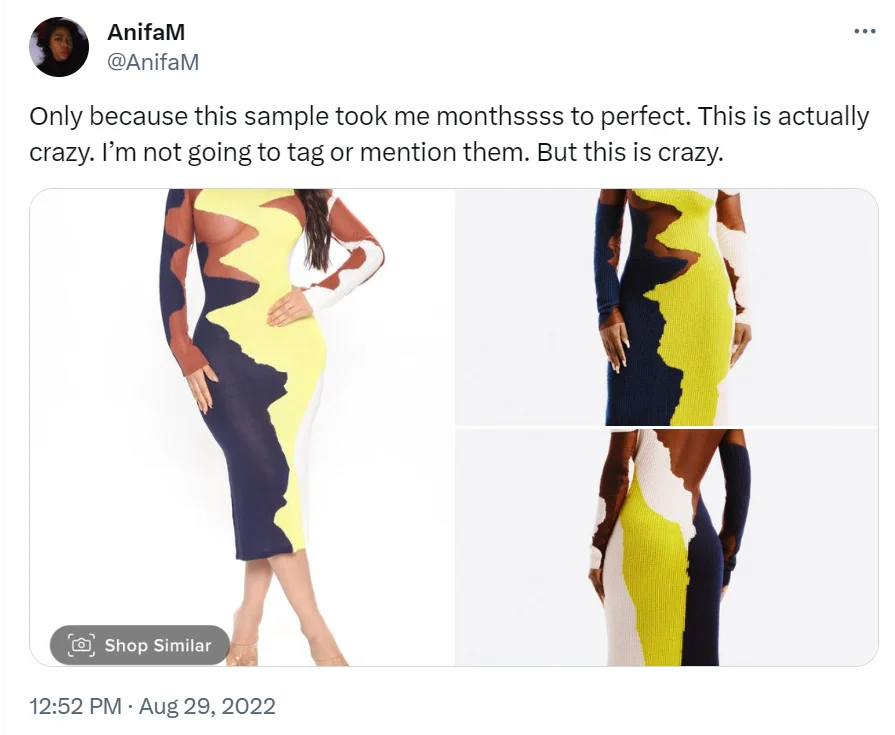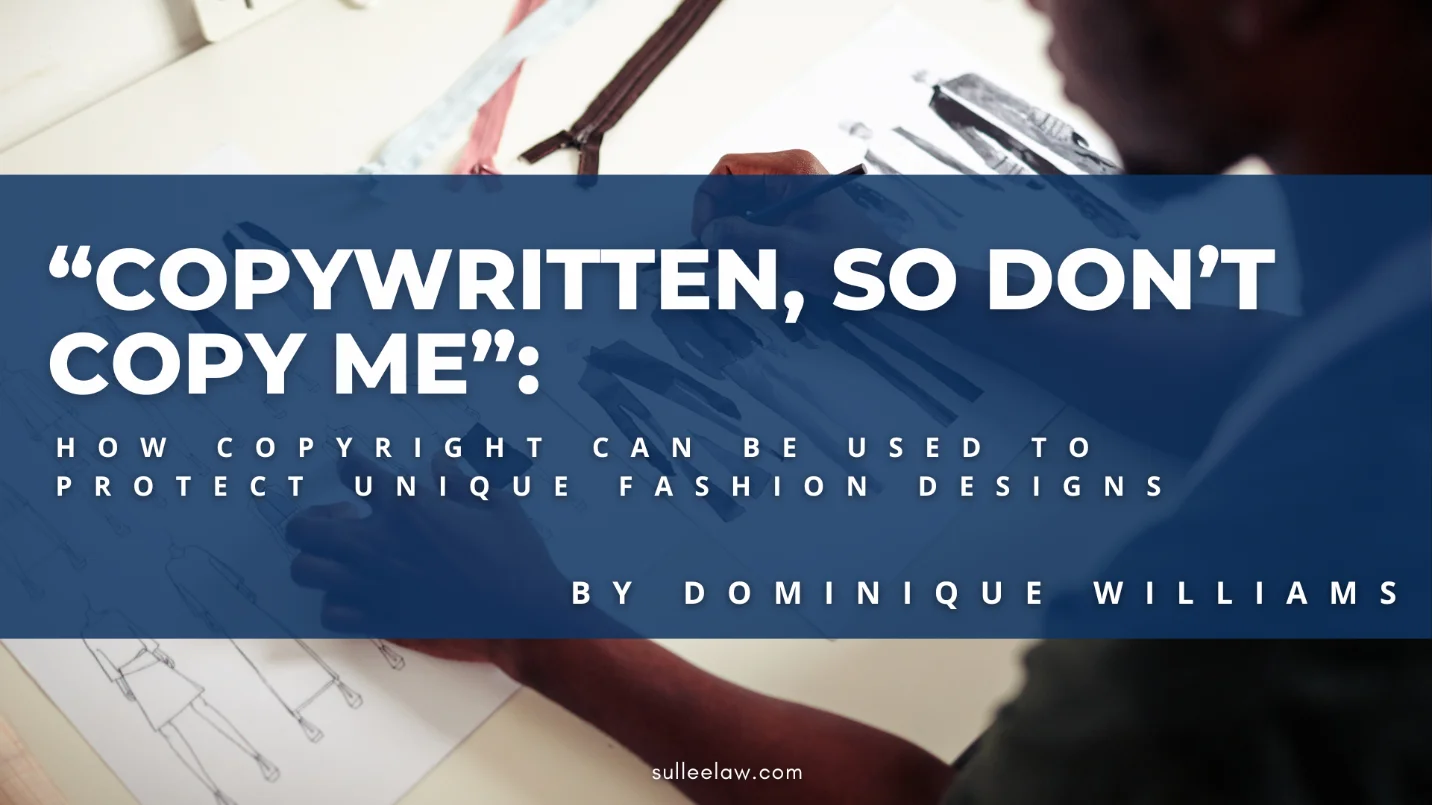As a self-proclaimed fashion enthusiast, I’ve often wondered how intellectual property laws can be used to protect the designs of designer’s unique designs, especially with the rise of fast fashion retailers like Fashion Nova, Shein, and Temu. These fast fashion mega-giants often add thousands of new items to their online retail stores each day and have become increasingly popular for offering trendy and affordable, albeit low quality, clothing items. However, in addition to being bad for the environment and promoting overconsumption, these fast fashion brands often offer unauthorized reproductions of designs that have been stolen from indie fashion brands, often owned by women of color, for a fraction of the price of the original item.
In fact, back in 2022, Fashion Nova was accused of stealing designs from Hanifa, a Black owned luxury brand. Specifically, Fashion Nova ripped of the design of Hanifa’s Jax Knit Gown, which retailed for $459.00. On Fashion Nova’s website, the poorly made knockoff retailed for $49.99. After Hanifa’s owner, Anifa Mvuemba highlighted the stealing on her Twitter, Fashion Nova quickly removed the dress from its website.

However, this wasn’t the first time that Fashion Nova had been caught stealing designs from independent designers. In fact, Destiney Bleu has accused the fast fashion giant of stealing her designs. Destiney owns d.bleu.dazzled, and she creates high quality bedazzled bodysuits, tights, and lingerie. As Destiney’s products began to gain popularity on social media, she went on to design outfits for celebrities like Beyonce and Mariah Carey. After Fashion Nova, and other fast fashion brands raced to capitalize on the popularity of Destiney’s designs, she revealed that her sales have been negatively impacted due to fast fashion brands stealing her unique designs and offering these items at a discounted price.
While I’ve specifically focused on Fashion Nova’s transgressions, Shein and Temu have also been the subject of similar copying controversies. In fact, Shein is currently embroiled in litigation and has been accused of violating the federal anti-racketeering act by copying independent designers’ works, while Temu has received an influx of independent designers indicating that their fashion designs or jewelry designs have been stolen and sold en masse.
So how can designers protect themselves from having their unique designs stolen? One avenue for protecting certain elements of a unique fashion design is through copyright. Copyright protection extends to original works of authorship fixed in a tangible medium, including pictorial, graphic, and sculptural works. 17 U.S.C. §102. However, not all elements of a design are copyrightable and may be more appropriately protected by a design patent.
Congress has provided limited protection for artistic elements of useful articles, which is defined under the Copyright Act as “an article having an intrinsic utilitarian function that is not merely to portray the appearance of the article or to convey the information”, such as bags and other articles of clothing.
For artistic elements of a useful article to be copyrightable, two conditions must be met. First, the design must be able to be perceived as a two- or three-dimensional work of art separate from the useful article. Second, the design elements must qualify as a protectable pictorial, graphic, or sculptural work, either on its own or fixed in some other tangible medium of expression, if it were imagined separately from the useful article into which it is incorporated. 17 U.S.C. §101. See alsoStar Athletica, L.L.C. v. Varsity Brands, Inc., 580 U.S. 405 (2016). This includes combinations, positionings, and arrangements of shapes, colors, and lines and designs imprinted in or on fabric.


